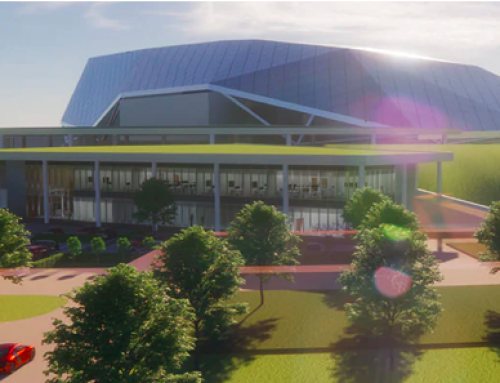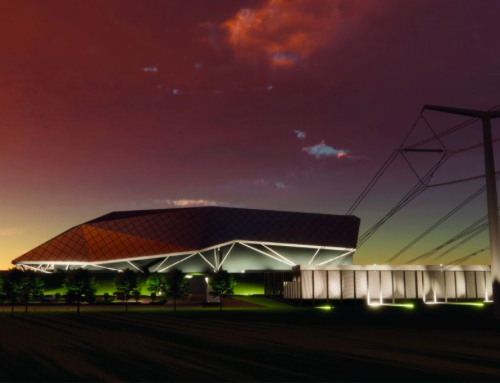There are now serious new doubts that Britain’s putative first new nuclear power plant in a generation, Hinkley Point C in Somerset in south west England, will ever be built.
These doubts have arisen as the British government has delayed making a final decision on the most expensive infrastructure project ever contemplated in the UK, despite EDF, the French-owned constructor, after much delay and board-room wrangles voted to start work on the project, by a small board majority of 10 to seven votes.
EDF ready to sign contracts to resume work on the scheme last Friday, and was surprised when Greg Clark, the new business, energy and industrial strategy secretary said: “The UK needs a reliable and secure energy supply and the government believes that nuclear energy is an important part of the mix.“The government will now consider carefully all the component parts of this project and make its decision in the early autumn.”
Newscasters have called the situation surrounding Hinkley Point as chaotic. British energy policy, however, has been a shambles for a long time, persisting through four governments; those of Tony Blair, Gordon Brown, the Coalition and David Cameron.
The British leaders started to lose the plot in 2008 when, having decided that a new generation of nuclear plants was the future in terms of reducing the dependence on fossil fuels in the UK, Gordon Brown brought in his Climate Change Act which involved an unrealistic target of shrinking carbon emissions so that they would be reduced by 80 per cent by 2050, compared with 1990.

Projected costs for Hinkley Point C are on the rise
This would be achieved by phasing out the major polluter — coal plants — and by a process of subsidies and encouragement of renewables together with maintaining a diminishing mix of the more minor polluters, oil and gas, particularly gas, so that an energy gap would not emerge until new nuclear plants were on stream.
But things have not worked out as planned. Coal plants are closing down more rapidly than expected. Renewables have grown rapidly in the UK from seven per cent of the energy mix ten years ago to 22 per cent today. Yet the renewable industries are still some way from finding solutions to energy storage for when the wind does not blow and the sun does not shine. Also electric and hydrogen vehicles are not ready yet to replace diesel and petrol-fuelled ones.
Above all though, the real problem is that the timelines and costs for nuclear are awry. And Hinkley Point, which, if and when it is built could supply seven per cent of the country’s energy needs, epitomises just how badly things can go wrong.
The technology is untested, the cost is prohibitive and the project is suspect in terms of EDF’s financial stamina and China’s dubious trustworthiness when it comes to anything nuclear.
The technology behind the European Pressurised Reactor (EPR) is meant to be safer than anything that has gone before. But EDF’s Flamanville project in northern France, overlooking the Channel, is three times over budget and years behind schedule. Moreover France’s nuclear safety authority has found weaknesses in the reactor’s steel.
This is the kind of reactor that EDF wants to bring to the UK. Construction of the plant was supposed to start in 2013 so it is already behind time-wise, even although £2.5billion has been spent on it.
The cost has almost doubled to £18bn leading to questions about whether EDF has the financial wherewithal to finish the project. Two directors have resigned from EDF saying it would bankrupt the company.
To ease the pain George Osborne, the former UK chancellor and his sidekick the former Energy Secretary Amber Rudd persuaded two Chinese companies to invest to the tune of a third of the project.
But the Chinese drove a hard bargain. Despite have been given a sweetener of £2m—some would say a bribe — to invest £6m in Hinkley Point, they will be able, if all goes according to plan, to be involved in a new power plant at Sizewell on the Suffolk coast and beyond that will have permission to be part of a new plant at Bradwell in Essex which will be designed according to their own technology.
The US State Department in Washington DC in the US is jumping and down at the prospect of Chinese nuclear technology being deployed unmonitored in the UK for security reasons. Theresa May is said to be concerned that the Chinese would have the capacity to switch some of the lights off in the UK on a whim.
This is why she is thought to have called for an examination of the components in the Hinkley Point mix. But there is a further problem to be looked at, and that is the exorbitant cost that will fall on the tax payer.
Under a ‘contract for difference’ drawn up by Osborne and Rudd after HInkley Point C is built, if it is built, by 2025, EDF would be entitled to receive £92 a megawatt hour (MWh) index- linked for 35 years for the energy it produces. The current price for electricity is £41 a MWh. These grotesquely inflated prices will not be met from the general tax net but will fall directly on consumers. Many consumers feel they are already paying over the odds for their energy.
Despite what Greg Clark has said about nuclear, while Theresa May ponders what to do about these “components”, it might also cross her mind that many in the country question whether we need nuclear power at all.
Some critics say that by 2025 clean technologies will have developed sufficiently to fill a looming energy gap. Well maybe, but it could be too late for that. The National Grid has said there is 4.5 per cent margin of supply over demand. On a bad day weather-wise there could be blackouts sooner rather than later.
What many people don’t realise there is an answer available to energy shortages and that is summed by the word ‘gas’. Gas now accounts for over 30 per cent of the UK’s energy mix. The North Sea may be in decline but there is still the potential to push up the gas percentage of the mix.
Forget for the moment the so-called shale revolution in the UK, which is stalled. There is a dash gas for gas amongst companies. Last summer, the North Sea’s biggest gas field discovery in a decade was approved for production by Britain’s Oil and Gas Authority, paving the way for a £3bn investment from the Danish giant Maersk.
The Culzean field, which was discovered in 2008 is to be developed by Maersk along with BP and JX Nippon. It holds an estimated 250 to 300 million barrels of oil equivalent (boe) enough to produce about 5 per cent of Britain’s total gas demand at peak production in 2020-21.
More recently (in October 2015) INEOS which operates Scotland largest refining/petrochemicals complex at Grangemouth directly attached to the North Sea, announced it had agreed to acquire a strong portfolio of conventional natural gas assets in the North Sea. These include the Breagh and Clipper South fields, which seem capable of accounting for 8 per cent of the UK’s annual gas production enough to warm one in 10 British homes.
These assets together with imports from, say, Norway could go a long way towards filling deficiencies in the energy mix in the short to medium term. The problem is that British gas utilities and firms have become wary of investing in new plant because of the confusion in government energy policy.
It is true that gas groups make good revenue from mechanisms like the short term operating reserve (STOR), where they receive money for being on stand by and further income for supplying power from wind farms when the wind does not blow.
But this is not the same thing as investing in a new facility, which can cost upward of £1m. Gas utilities say would want guarantees they could operate 24/7 or receive government support. It would be a supreme irony if the government, which has slashed subsidies to renewables now finds itself subsidising gas concerns which are, after all, processing a fossil fuel.
Stewart Dalby (July 7, 2016)





